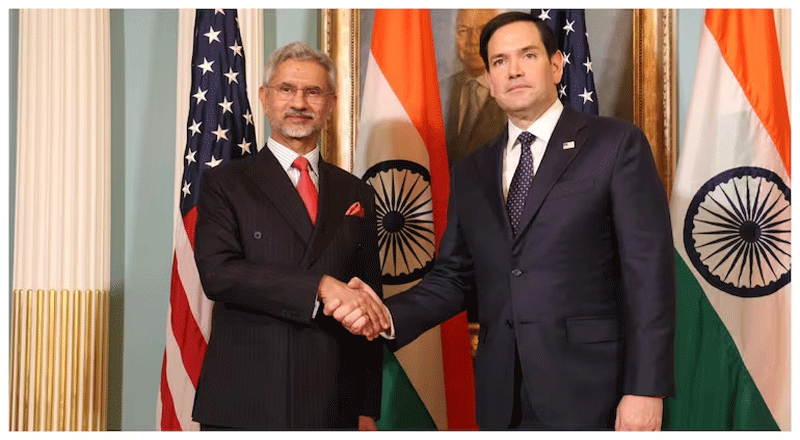Just a day after Donald Trump was sworn in as the 47th President of the United States, his administration began to take shape. One of the first major confirmations was that of Marco Rubio as the new Secretary of State. Sworn in on Tuesday after a successful Senate vote, Rubio wasted no time in assuming his duties, immediately signaling the strategic importance of India in US foreign policy.
In a notable first move, Rubio chose India’s External Affairs Minister S Jaishankar for his inaugural bilateral meeting. This decision underscores the Trump administration’s intent to prioritize its relationship with New Delhi. Their discussions, followed by a meeting with Quad counterparts from Australia and Japan, further highlighted Washington’s focus on strengthening Indo-Pacific alliances.
Strengthening US-India Relations
Shortly after being sworn in, Rubio sat down with Jaishankar for a detailed discussion on the state of India-US relations. The backdrop to this meeting included ongoing challenges such as the deportation of around 18,000 undocumented Indian nationals from the US, a policy shift reported by Bloomberg.
The meeting covered a wide spectrum of strategic issues, including:
- Enhancing cooperation on critical and emerging technologies
- Strengthening defense and security collaboration
- Advancing trade and economic partnerships
- Addressing irregular migration concerns
- Reinforcing a free and open Indo-Pacific region
A joint statement from the US State Department emphasized the Trump administration’s commitment to deepening economic ties with India while addressing mutual concerns. Jaishankar, in a post on social media platform X, expressed his optimism about working with Rubio, acknowledging his strong advocacy for the bilateral partnership.
This diplomatic engagement is particularly significant not only because it was Rubio’s first as Secretary of State but also because he prioritized India over traditional allies like Canada, Mexico, or NATO members—signaling a shift in US foreign policy under Trump.
The Quad Meeting: A Focus on the Indo-Pacific
Following his meeting with Jaishankar, Rubio hosted a discussion with Quad leaders, including Penny Wong from Australia and Takeshi Iwaya from Japan. The four diplomats reaffirmed their shared commitment to maintaining a “Free and Open Indo-Pacific,” emphasizing democratic values, sovereignty, and territorial integrity.
This meeting further solidified India’s position as a key strategic partner for the US, especially in countering China’s growing influence in the region. It also demonstrated the Trump administration’s focus on strengthening multilateral ties through the Quad framework.
A Front-Row Seat for India
Another indicator of India’s growing importance to the US was Jaishankar’s prominent placement at Trump’s inauguration. The Indian foreign minister was seated in the front row alongside Ecuadorian President Daniel Noboa, a clear protocol upgrade that did not go unnoticed by geopolitical observers. Notably, Japanese Foreign Minister Takeshi Iwaya was seated two rows behind, reinforcing the notion that India holds a unique position in Trump’s diplomatic vision.
The Future of US-India Relations Under Trump
With Donald Trump back in the White House, experts anticipate a strong momentum in India-US relations. However, challenges remain, particularly in trade negotiations and migration policies. Trump’s personal rapport with Indian Prime Minister Narendra Modi is expected to further bolster ties, but potential friction points include:
- Trade disputes, including tariffs and market access
- The balance between Trump’s ‘America First’ policy and Modi’s ‘Make in India’ initiative
- Technology transfer and defense manufacturing agreements
Despite these hurdles, analysts believe that countering China will be a key unifying factor driving the US-India strategic partnership. According to an ORF report, Trump’s second term is likely to see an intensified focus on defense cooperation and security partnerships in the Indo-Pacific.
A Stronger Partnership Ahead?
While uncertainties remain, early signals from the Trump administration suggest a deepening of US-India ties. The prioritization of India in Rubio’s first bilateral meeting and the Quad discussions indicate a strategic shift in Washington’s foreign policy approach.
As diplomatic engagements continue, all eyes will be on Trump’s expected visit to India within the first 100 days of his presidency. Whether this momentum translates into tangible policy advancements remains to be seen, but for now, the message is clear—India is a key partner for the US under Trump 2.0.
(With inputs from agencies)





